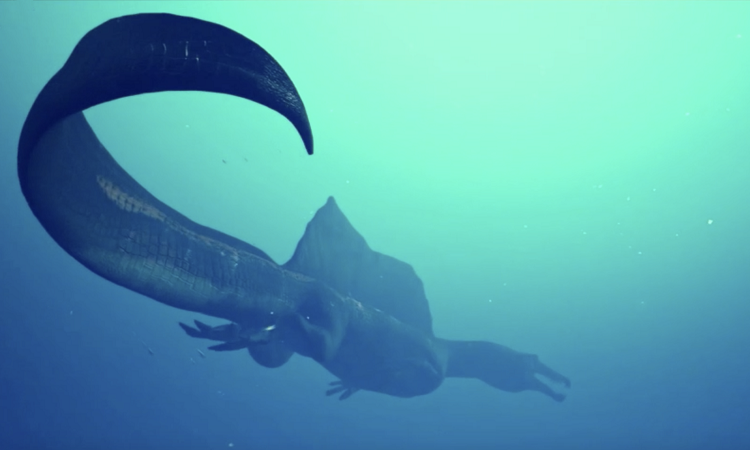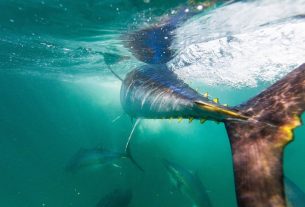Analysis of a spinosaurus tail fossil again highlights the semi-aquatic lifestyle of this ferocious predator.
spinosaurus has been known since its discovery in Egypt in 1912, but it remains very mysterious in the eyes of science. A thick fog that we mainly owe to the fragmentary nature of its remains. Over time, however, the appearance of the dinosaur, which evolved between 100 and 95 million years ago, began to emerge.
We can imagine a large predator about 15 meters long, sporting an imposing dorsal crest. There is also a long snout with conical teeth reminiscent of those of crocodiles. The latter surely allowed him to catch slippery prey like fish. It was then suggested that the spinosaurus was, at least in part, piscivorous.
The opening of its retracted nose positioned further back on the skull compared to other predatory dinosaurs, would also have made it easier for this animal to breathe upon its return to the surface.
All of these characteristics ultimately suggested that this dinosaur likely had a semi-aquatic lifestyle. A recent discovery confirms this. The animal seemed much more comfortable in the water than we thought. Details of the study are published in the journal Nature.
A contoured tail for swimming
A few years ago, paleontologists found a tail fossil of a well-preserved young spinosaurus (about 80% of the tail) in the Kem Kem, in southeast Morocco. And this one was nothing like that of other theropod carnivores. They were indeed surprised to note a form of a paddle, a priori capable of a wide lateral movement.
Thanks to photogrammetry, which made it possible to deliver a digital model of this tail, the researchers were then able to physically reconstruct it (in plastic), and then connect it to a robotic system imitating swimming movements. The researchers then compared these swimming performances with those of other animals, such as crocodiles and newts.
This work finally revealed an “exceptionally flexible” tail, allowing “a fairly impressive range of motion”, write the researchers. More precisely, the tail generated eight times more thrust in water than the tail of two other theropods – Allosaurus and Coelophysis.
The first confirmed semi-aquatic dinosaur
Based on these results, scientists are now convinced: spinosaurus aegyptiacus, the longest predatory dinosaur known to science, was not only standing in shallow waters while waiting for the passage of fish; it also used tail-powered locomotion to hunt prey – sometimes as big as cars – like modern crocodiles. It is the first time that such an adaptation has been reported in a dinosaur.
“This discovery is the nail in the coffin of the idea that non-avian dinosaurs never invaded the aquatic world,” said Nizar Ibrahim, of the University of Detroit Mercy and lead author of the study, in a statement.
Note that if the spinosaurus was clearly a swimmer capable of easily evolving in shallow waters, fossil remains have also been found inland. In other words, the animal was probably “as comfortable on land as it is in water,” the researchers conclude.




